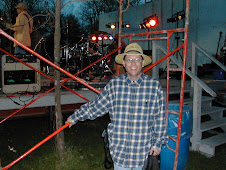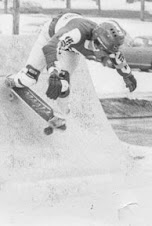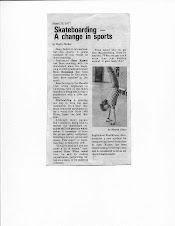
Forty years ago, I would have never considered terms like role model and learning curve. But as it is, I’m now in deep thought and prayer over both. Let me explain and share some definitions I garnered from Wikipedia.
The term role model first appeared in Robert K. Merton's socialization research of medical students. Merton hypothesized that individuals compare themselves with reference groups of people who occupy the social role to which the individual aspires. The term has passed into general use to mean any "person who serves as an example, whose behavior is emulated by others.
The term learning curve refers to a graphical representation of the changing rate of learning (in the average person) for a given activity or tool. Typically, the increase in retention of information is sharpest after the initial attempts, and then gradually evens out, meaning that less and less new information is retained after each repetition.
Somewhere back in my elementary years, I found great joy in putting together model cars. My favorite brand is shown in the graphic above.
Amongst those of us guys who did the craft, snap together models were the bush-league of the industry. Snap together models required less time and thinking. Not to mention that notorious “glue” that we all had access to. Oh those were the days.
The whole purpose of the craft was to create a representation so true to the original that anyone who looked upon it would be sure to take a second glance and wonder; how did the builder do that?
Now I have to admit I had friends like Tim Erickson and Jim Cunningham who seemed to always be able to make the coolest models. But the joy of just getting a fresh box of parts and taking on the challenge was enough to alleviate any sense of competition or jealousy. Just building the model was an incredible delight.
Now here I am some forty years removed from those model building days and I’m considering the landscape of true model building in our culture. Oh not the kind we used to build, but human models. Models or representations of someone greater than us, yet who we aspire to be like. And can I say, fewer and fewer are making the cut.
It seems that in a world desperately needing quality role models, we’re up against a culture that wants only snap together leaders. We seem to be a culture that cares little about the process of replication. You know, how someone gets to where they are in life and influence. Let’s just crank out another leader and see if anyone follows. Ask P.T. Barnum about that idea. All without attention to detail and accuracy of the One we should ultimately be replicating.
As for learning curves, the principle seems self evident. We seem to all get on the band wagon at first and grab as much info, influence, and inspiration as we possibly can, but then we tend to loose our ability to hold onto little more than our initial grab.
Ergo a church that has become an inch deep and a mile wide. We may be just a few steps behind our present culture.
Here’s my concern: We MUST regain our passion for verbatim emulation of the person of Jesus Christ. And even when we run into the learning curve of the soul, we MUST NEVER give up the intake of the Divine Voice and Vision.
God forbid that we use anyone but Jesus as our role model. And God forbid that we cease learning and growing, just because it gets difficult.
So the next time you look up to someone as a role model, make sure it’s Jesus. And make sure you seek to replicate all His qualities and characteristics. And further, make sure that when the instructions seem a bit daunting, press on, because God promises to accompany us on that learning curve.
Now go build a model. Use real glue and never go for the snap together ones. You’ll be glad you did.





